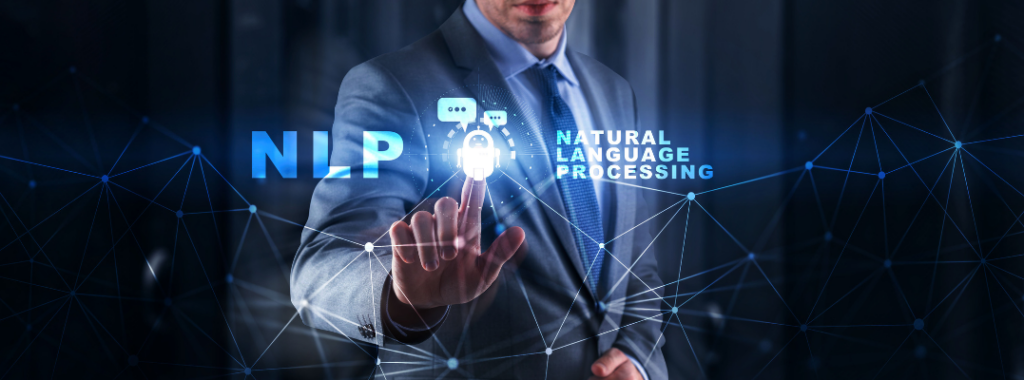
Artificial Intelligence (AI) has become a game-changer for businesses across industries, seemingly overnight. Whether you’re a tech giant or a small startup, harnessing the power of AI can provide a competitive edge and open up countless new possibilities for whatever it is you want to accomplish.
Using AI may be as simple as typing a few words into a search bar and hitting enter… But really implementing AI is about leveraging that same technology to creatively solve real-world problems and boost your business’s performance. In this blog post, we’ll explore the best practices for creatively incorporating artificial intelligence into what your business is already doing.
1. Define Your Objectives:
Before diving into the world of AI, it’s crucial to clearly define your business objectives and the problems you intend to solve. AI is a tool, not a goal in itself. Identify areas in your business where AI can make a significant impact, such as customer service, sales, marketing, or product development. For example, if you run an ecommerce business, you might use AI to improve personalization, recommendations, or supply chain optimization.
2. Data Quality and Quantity:
AI thrives on data, and the saying “garbage in, garbage out” couldn’t be more relevant here. Ensure that your data is accurate, relevant, and of high quality. Collect as much data as possible, but also be cautious of data privacy regulations. To creatively leverage AI, think about new ways to gather data, such as user-generated content or integrating data from external sources.
3. Choose the Right AI Tools:
Selecting the right AI tools and technologies is crucial. Depending on your objectives and available resources, you might opt for pre-built AI solutions, AI as a Service (AIaaS), or develop your own custom AI models. Popular choices include machine learning, natural language processing, computer vision, and chatbots. The key is to align your AI toolset with your business needs.
4. Leverage Predictive Analytics:
Predictive analytics is one of the most powerful applications of AI in business. By analyzing historical data, AI can help you make informed decisions about future trends, customer behavior, and market dynamics. For instance, AI can predict customer churn, enabling you to take proactive measures to retain them.

5. Enhance Customer Experience:
AI can revolutionize the way you interact with customers. Chatbots, virtual assistants, and AI-driven customer service platforms can provide instant support, answer common queries, and create a personalized experience. A creative approach might involve using AI to provide real-time product recommendations or to understand customer sentiment through sentiment analysis.
6. Automate Tedious Tasks:
AI excels at automating repetitive and time-consuming tasks. By offloading these responsibilities to AI, your employees can focus on more strategic, creative, and value-added tasks. Consider automating data entry, reporting, and inventory management, allowing your team to concentrate on business growth and innovation.
7. Personalization at Scale:
AI enables you to deliver personalized experiences to your customers on a massive scale. Leverage AI to segment your audience and create tailored content, recommendations, and marketing campaigns. For example, Netflix uses AI to recommend movies and shows based on a user’s viewing history, enhancing the user experience and retention.
8. Streamline Decision-Making:
AI can process and analyze vast amounts of data at incredible speed. This is particularly useful in decision-making processes. For example, AI can help you make pricing decisions, optimize supply chains, and even forecast market trends. It can analyze data that humans may overlook, leading to more informed, data-driven decisions.
9. A/B Testing and Optimization:
Creative implementation of AI involves continuously optimizing your business processes. Conduct A/B tests and use AI to analyze the results. AI can suggest improvements and help you fine-tune your strategies to achieve better results over time.

10. Harness the Power of Natural Language Processing (NLP):
NLP is a branch of AI that focuses on understanding and processing human language. It’s a game-changer for content creation, sentiment analysis, and customer support. For example, NLP can analyze social media chatter to understand what customers are saying about your products and services.
11. Data Visualization with AI:
Data visualization is essential for understanding complex datasets. AI-driven data visualization tools can automatically generate meaningful insights from raw data, simplifying the decision-making process and enabling your team to spot trends and opportunities that might have otherwise gone unnoticed.
12. IoT and AI Integration:
The Internet of Things (IoT) is another transformative technology. By integrating IoT with AI, you can collect and analyze real-time data from connected devices. This can lead to predictive maintenance, improved product quality, and better customer experiences.
13. Ethical Considerations:
AI, like any technology, has ethical implications. Creatively incorporating AI into your business practices also means addressing ethical issues. Ensure that your AI solutions respect user privacy, prevent bias in decision-making, and adhere to relevant regulations. Transparency and accountability are crucial.
14. Employee Training:
Creative AI implementation involves empowering your employees with the skills and knowledge to work alongside AI systems. This might require investing in training programs to help your workforce understand AI technologies and their applications.
15. Continuous Learning and Adaptation:
AI is an evolving field. Stay updated with the latest trends and innovations in AI to ensure your business remains competitive. Creativity in AI doesn’t just involve its initial implementation but also ongoing learning and adaptation to remain at the forefront of your industry.

16. Measure and Analyze Results:
Creativity is not just about implementing AI in your business; it’s about knowing what works and what doesn’t. Use key performance indicators (KPIs) to measure the impact of AI on your business. This could include metrics like revenue growth, cost savings, customer satisfaction, and operational efficiency.
17. Foster a Culture of Innovation:
To truly embrace AI creatively, it’s essential to foster a culture of innovation within your organization. Encourage your employees to think outside the box and explore new ways in which AI can benefit your business. Reward and recognize innovative ideas and initiatives.
18. Collaboration is Key:
Creativity often flourishes in collaborative environments. Encourage collaboration between different departments within your organization, and even consider partnerships with other companies in your industry. Sometimes, a fresh perspective from an external source can lead to groundbreaking AI solutions.
19. Embrace Failure:
Not every AI initiative will succeed, and that’s okay. Failure is part of the creative process. It’s important to learn from your failures and iterate on your ideas. Don’t be discouraged by setbacks; they can often lead to breakthroughs.
20. Protect Intellectual Property:
When you develop custom AI solutions, be sure to protect your intellectual property through patents or trade secrets. Creative AI implementations can give your business a unique advantage, and you’ll want to safeguard your innovations.
Creatively incorporating AI into your business practices is not a one-size-fits-all endeavor.
It requires a deep understanding of your business objectives, a commitment to data quality, and a willingness to explore new possibilities. AI is a tool that can enhance your business operations, provide a competitive edge, and drive innovation.
By following these best practices, your business can harness the transformative power of AI while fostering a culture of creativity and innovation.Remember that AI is a rapidly evolving field, so staying updated and adapting to new advancements is essential. Embrace the possibilities, encourage collaboration, and be open to learning from both successes and failures. By doing so, you can unlock the full creative potential of AI and drive your business to new heights.